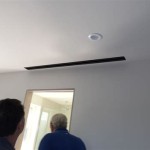Insulating a basement ceiling is an important step for homeowners who want to protect their house from the elements. Basement insulation helps to keep heat in during colder months and keeps heat out during the summer months, helping to reduce energy costs. Additionally, insulation can help to reduce noise from the street and other sources. In this step-by-step guide, we’ll walk you through the process of insulating your basement ceiling so that you can save money and enjoy the benefits of a comfortable home.
Step 1: Planning and Preparation
Before you begin insulating your basement ceiling, it is important to take the time to plan and prepare. The first step is to measure the basement ceiling and determine the amount of insulation you will need. You will also need to decide which type of insulation you will use. There are several different types of insulation, such as fiberglass, cellulose, and spray foam. There are also various thicknesses available, so be sure to select the appropriate type and thickness for your needs.
You will also need to decide if you will need to use vapor barrier in your basement ceiling. A vapor barrier is a sheet of plastic or other material that is used to stop moisture from penetrating the insulation. The vapor barrier is typically placed between the insulation and the drywall. If you are in a humid climate, it is recommended to use a vapor barrier.
Step 2: Installing the Insulation
Once you have decided on the type and thickness of insulation, you can begin the installation process. Start by cutting the insulation to fit the measurement of your basement ceiling. Next, you will need to install the insulation. Depending on the type of insulation you have chosen, this could involve rolling out fiberglass insulation, attaching sheets of cellulose insulation, or spraying foam insulation. Make sure to follow the manufacturer’s instructions for installation.
If you are using a vapor barrier, you will need to attach it to the basement ceiling using nails or staples. Make sure to cover the entire area that is being insulated. Once the insulation and vapor barrier are in place, you can start to attach the drywall. Secure the drywall to the ceiling joists with nails or screws.
Step 3: Finishing the Job
When the drywall is attached, the final step is to finish the job. You will need to apply joint compound to the seams between the drywall sheets and then cover this with a layer of drywall tape. Once the tape is in place, you can start to sand the joint compound until it is smooth. Finally, you will need to apply a coat of primer followed by a coat of paint to complete the job.
Insulating a basement ceiling is an important step for homeowners who want to keep their home comfortable and energy efficient. With a little planning and preparation, you can successfully insulate your basement ceiling and enjoy the benefits for years to come.















Related Posts








